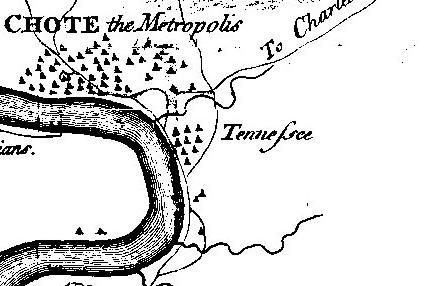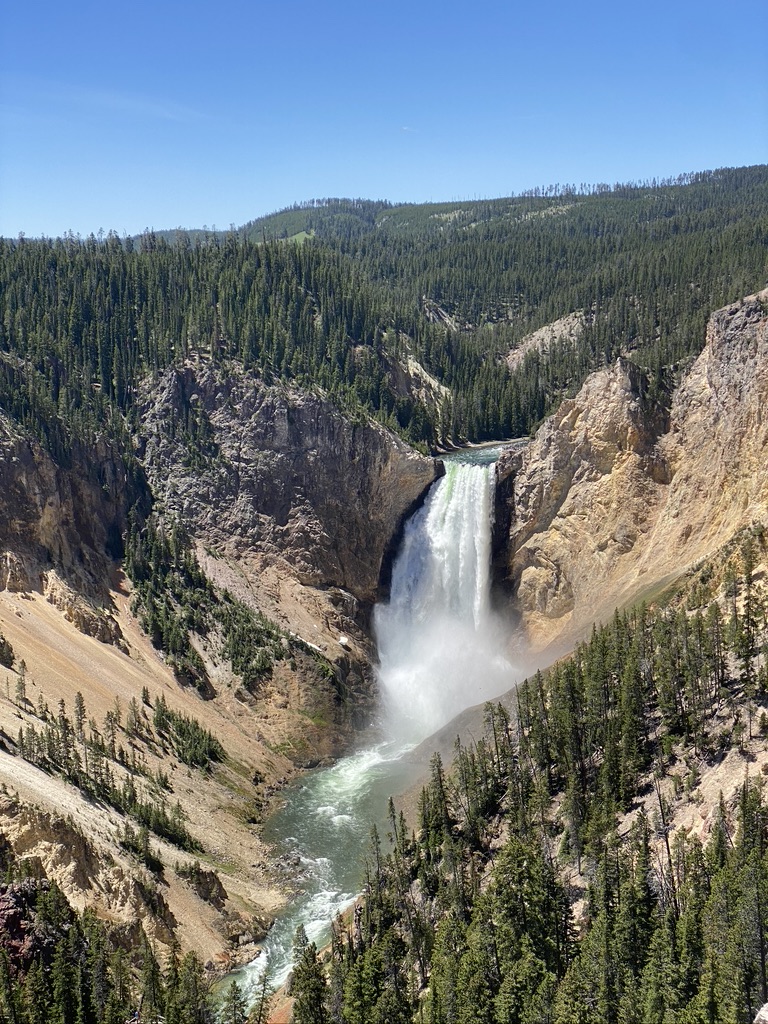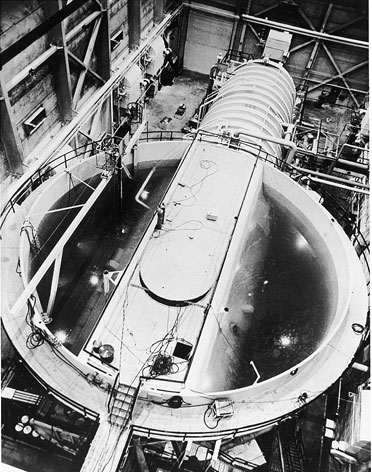|
Fast Flux Test Facility
The Fast Flux Test Facility (FFTF) is a 400 MW thermal, liquid sodium cooled, nuclear test reactor owned by the U.S. Department of Energy. It does not generate electricity. It is situated in the ''400 Area'' of the Hanford Site, which is located in the state of Washington. History The construction of the FFTF was completed in 1978, and the first reaction took place in 1980. From April 1982 to April 1992 it operated as a national research facility to test various aspects of commercial reactor design and operation, especially relating to breeder reactors. The FFTF is not a breeder reactor itself, but rather a sodium-cooled fast neutron reactor, as the name suggests. It is stated on the site dedicated to the FFTF, that it tested "advanced nuclear fuels, materials, components, nuclear power plant operations and maintenance protocols, and reactor safety designs." By 1993, the number of uses to which the reactor could be put was diminishing, so the decision was taken in Decembe ... [...More Info...] [...Related Items...] OR: [Wikipedia] [Google] [Baidu] |
FFTF 09050009-130 Large , a non-profit advocacy group
{{Disambiguation ...
FFTF may refer to: * Fast Flux Test Facility, an American nuclear test reactor * Fight for the Future Fight for the Future (often abbreviated fightfortheftr or FFTF) is a nonprofit advocacy group in the area of digital rights founded in 2011. The group aims to promote causes related to copyright legislation, as well as online privacy and cen ... [...More Info...] [...Related Items...] OR: [Wikipedia] [Google] [Baidu] |
Bulletin Of The Atomic Scientists
The ''Bulletin of the Atomic Scientists'' is a nonprofit organization concerning science and global security issues resulting from accelerating technological advances that have negative consequences for humanity. The ''Bulletin'' publishes content at both a free-access website and a bi-monthly, nontechnical academic journal. The organization has been publishing continuously since 1945, when it was founded by former Manhattan Project scientists as the ''Bulletin of the Atomic Scientists of Chicago'' immediately following the atomic bombings of Hiroshima and Nagasaki. The organization is also the keeper of the symbolic Doomsday Clock, the time of which is announced each January. Background One of the driving forces behind the creation of the ''Bulletin'' was the amount of public interest surrounding atomic energy and rapid technological change at the dawn of the Atomic Age. In 1945 the public interest in atomic warfare and weaponry inspired contributors to the ''Bulletin'' to att ... [...More Info...] [...Related Items...] OR: [Wikipedia] [Google] [Baidu] |
Tennessee
Tennessee ( , ), officially the State of Tennessee, is a landlocked state in the Southeastern region of the United States. Tennessee is the 36th-largest by area and the 15th-most populous of the 50 states. It is bordered by Kentucky to the north, Virginia to the northeast, North Carolina to the east, Georgia, Alabama, and Mississippi to the south, Arkansas to the southwest, and Missouri to the northwest. Tennessee is geographically, culturally, and legally divided into three Grand Divisions of East, Middle, and West Tennessee. Nashville is the state's capital and largest city, and anchors its largest metropolitan area. Other major cities include Memphis, Knoxville, Chattanooga, and Clarksville. Tennessee's population as of the 2020 United States census is approximately 6.9 million. Tennessee is rooted in the Watauga Association, a 1772 frontier pact generally regarded as the first constitutional government west of the Appalachian Mountains. Its name derives fr ... [...More Info...] [...Related Items...] OR: [Wikipedia] [Google] [Baidu] |
Oak Ridge National Laboratory
Oak Ridge National Laboratory (ORNL) is a U.S. multiprogram science and technology national laboratory sponsored by the U.S. Department of Energy (DOE) and administered, managed, and operated by UT–Battelle as a federally funded research and development center (FFRDC) under a contract with the DOE, located in Oak Ridge, Tennessee. Established in 1943, ORNL is the largest science and energy national laboratory in the Department of Energy system (by size) and third largest by annual budget. It is located in the Roane County section of Oak Ridge, Tennessee. Its scientific programs focus on materials, nuclear science, neutron science, energy, high-performance computing, systems biology and national security, sometimes in partnership with the state of Tennessee, universities and other industries. ORNL has several of the world's top supercomputers, including Frontier, ranked by the TOP500 as the world's most powerful. The lab is a leading neutron and nuclear power rese ... [...More Info...] [...Related Items...] OR: [Wikipedia] [Google] [Baidu] |
Idaho
Idaho ( ) is a state in the Pacific Northwest region of the Western United States. To the north, it shares a small portion of the Canada–United States border with the province of British Columbia. It borders the states of Montana and Wyoming to the east, Nevada and Utah to the south, and Washington and Oregon to the west. The state's capital and largest city is Boise. With an area of , Idaho is the 14th largest state by land area, but with a population of approximately 1.8 million, it ranks as the 13th least populous and the 7th least densely populated of the 50 U.S. states. For thousands of years, and prior to European colonization, Idaho has been inhabited by native peoples. In the early 19th century, Idaho was considered part of the Oregon Country, an area of dispute between the U.S. and the British Empire. It officially became U.S. territory with the signing of the Oregon Treaty of 1846, but a separate Idaho Territory was not organized until 1863, i ... [...More Info...] [...Related Items...] OR: [Wikipedia] [Google] [Baidu] |
Idaho National Laboratory
Idaho National Laboratory (INL) is one of the national laboratories of the United States Department of Energy and is managed by the Battelle Energy Alliance. While the laboratory does other research, historically it has been involved with nuclear research. Much of current knowledge about how nuclear reactors behave and misbehave was discovered at what is now Idaho National Laboratory. John Grossenbacher, former INL director, said, "The history of nuclear energy for peaceful application has principally been written in Idaho". Various organizations have built more than 50 reactors at what is commonly called "the Site", including the ones that gave the world its first usable amount of electricity from nuclear power and the power plant for the world's first nuclear submarine. Although many are now decommissioned, these facilities are the largest concentration of reactors in the world. It is on a complex in the high desert of eastern Idaho, between Arco to the west and Idaho ... [...More Info...] [...Related Items...] OR: [Wikipedia] [Google] [Baidu] |
Versatile Test Reactor
The Versatile Test Reactor (VTR) was a project by the U.S. Department of Energy to build a fast-neutron test reactor by 2026. Funding for the project was scrapped in 2022 History After the Fast Flux Test Facility and the Experimental Breeder Reactor-II (EBR-II) were decommissioned in 1992 and 1994, respectively, the United States was left with no fast-neutron reactor in its fleet. Fast-neutron research was limited to a few restricted reactors located in Russia, including the Bor-60. To address this problem Nuclear Energy Innovation Capabilities Act of 2017 included a provision directing the Department of Energy to begin planning for a fast-neutron source. Congress included $35 million in 2018 and $65 million in 2019 in the budget in support of this. In February 2019, VTR cleared Critical Decision 0, demonstrating a mission need requiring investment, the first in a series of project approvals. At that time, Secretary of Energy Rick Perry announced the start of the Versatile T ... [...More Info...] [...Related Items...] OR: [Wikipedia] [Google] [Baidu] |
Isotope
Isotopes are two or more types of atoms that have the same atomic number (number of protons in their nuclei) and position in the periodic table (and hence belong to the same chemical element), and that differ in nucleon numbers ( mass numbers) due to different numbers of neutrons in their nuclei. While all isotopes of a given element have almost the same chemical properties, they have different atomic masses and physical properties. The term isotope is formed from the Greek roots isos ( ἴσος "equal") and topos ( τόπος "place"), meaning "the same place"; thus, the meaning behind the name is that different isotopes of a single element occupy the same position on the periodic table. It was coined by Scottish doctor and writer Margaret Todd in 1913 in a suggestion to the British chemist Frederick Soddy. The number of protons within the atom's nucleus is called its atomic number and is equal to the number of electrons in the neutral (non-ionized) atom. Each atomic n ... [...More Info...] [...Related Items...] OR: [Wikipedia] [Google] [Baidu] |
Radioactive Waste
Radioactive waste is a type of hazardous waste that contains radioactive material. Radioactive waste is a result of many activities, including nuclear medicine, nuclear research, nuclear power generation, rare-earth mining, and nuclear weapons reprocessing. The storage and disposal of radioactive waste is regulated by government agencies in order to protect human health and the environment. Radioactive waste is broadly classified into low-level waste (LLW), such as paper, rags, tools, clothing, which contain small amounts of mostly short-lived radioactivity, intermediate-level waste (ILW), which contains higher amounts of radioactivity and requires some shielding, and high-level waste (HLW), which is highly radioactive and hot due to decay heat, so requires cooling and shielding. In nuclear reprocessing plants about 96% of spent nuclear fuel is recycled back into uranium-based and mixed-oxide (MOX) fuels. The residual 4% is minor actinides and fission products the latte ... [...More Info...] [...Related Items...] OR: [Wikipedia] [Google] [Baidu] |
Technetium-99
Technetium-99 (99Tc) is an isotope of technetium which decays with a half-life of 211,000 years to stable ruthenium-99, emitting beta particles, but no gamma rays. It is the most significant long-lived fission product of uranium fission, producing the largest fraction of the total long-lived radiation emissions of nuclear waste. Technetium-99 has a fission product yield of 6.0507% for thermal neutron fission of uranium-235. The metastable technetium-99m (99mTc) is a short-lived (half-life about 6 hours) nuclear isomer used in nuclear medicine, produced from molybdenum-99. It decays by isomeric transition to technetium-99, a desirable characteristic, since the very long half-life and type of decay of technetium-99 imposes little further radiation burden on the body. Radiation The weak beta emission is stopped by the walls of laboratory glassware. Soft X-rays are emitted when the beta particles are stopped, but as long as the body is kept more than 30 cm away these should ... [...More Info...] [...Related Items...] OR: [Wikipedia] [Google] [Baidu] |
Radionuclide
A radionuclide (radioactive nuclide, radioisotope or radioactive isotope) is a nuclide that has excess nuclear energy, making it unstable. This excess energy can be used in one of three ways: emitted from the nucleus as gamma radiation; transferred to one of its electrons to release it as a conversion electron; or used to create and emit a new particle ( alpha particle or beta particle) from the nucleus. During those processes, the radionuclide is said to undergo radioactive decay. These emissions are considered ionizing radiation because they are energetic enough to liberate an electron from another atom. The radioactive decay can produce a stable nuclide or will sometimes produce a new unstable radionuclide which may undergo further decay. Radioactive decay is a random process at the level of single atoms: it is impossible to predict when one particular atom will decay. However, for a collection of atoms of a single nuclide the decay rate, and thus the half-life (''t''1/2) ... [...More Info...] [...Related Items...] OR: [Wikipedia] [Google] [Baidu] |





